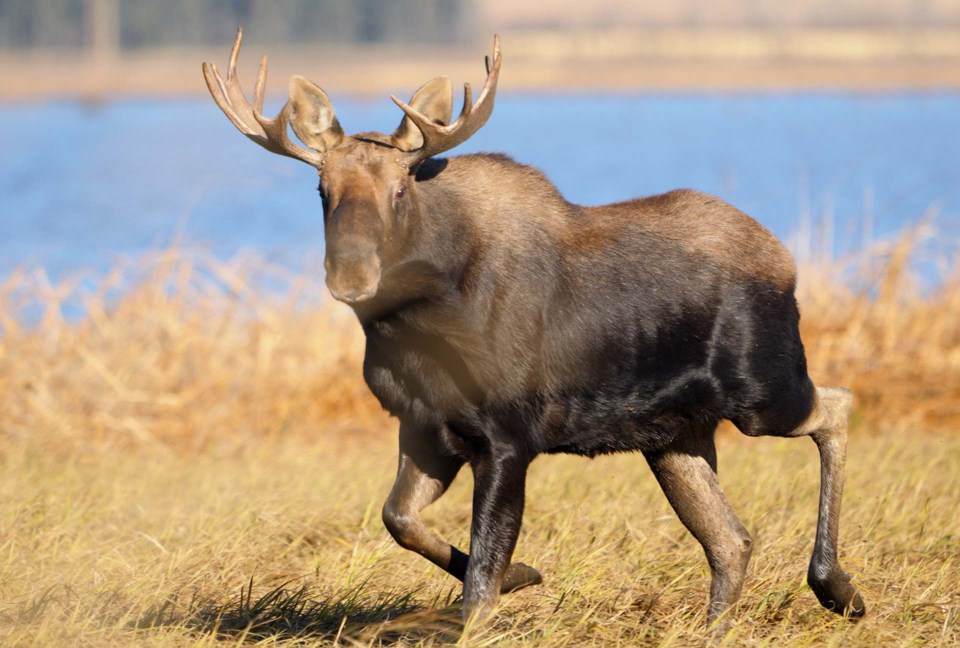Clarification
This story originally said the moose in the pond was struck on or around Oct. 15 based on a report from BLESS, which the Gazette has since learned was based on a Facebook post. Other reports, including one from St. Albert resident Pat Collins, suggest the moose may have been struck as early as August 2023. This story has been updated to reflect this information.
The stewards of Lois Hole Park have called on officials to slow down traffic on Ray Gibbon Drive after a moose was struck by a vehicle there Wednesday night.
Police received a complaint at about 8:15 p.m. Nov. 15 that a car travelling south on Ray Gibbon Drive had struck a moose near the McKenney Ave. intersection, St. Albert RCMP Cst. MJ Burroughs said in an email. The car was not driveable afterwards, but none of its occupants were injured. Burroughs did not know what happened to the moose.
“Ray Gibbon Drive is known to have deer, moose, and coyotes grazing throughout the area, thus drivers should be alert to possible wildlife crossing the roadway day or night,” Burroughs said.
Moose are a relatively common sight around Big Lake and the Sturgeon River, particularly around the Grey Nuns White Spruce Park, which is just east of where this collision occurred.
This collision is at least the second car vs. moose incident on Ray Gibbon this fall. Another moose was struck on that road sometime between August and Oct. 15, and later died in a nearby stormwater pond.
Tony Druett of BLESS (the designated stewards of Lois Hole Centennial Provincial Park) said he considered it unusual to have two moose struck on this road in just a few months. The group is lobbying the City of St. Albert and the province to post animal-crossing signs along and to lower the speed limit on Ray Gibbon Drive to reduce the risk of animal collisions, and to keep the keep the north bank under the road’s bridge over the Sturgeon undeveloped so it can act as a wildlife corridor. Fences could help, but would have to be built carefully to avoid trapping moose on the road.
November is the peak month for wildlife collisions in Alberta, with most collisions occurring between 7 and 11 p.m., the Alberta Motor Association reports. The AMA advises drivers to actively scan for animals near the road, avoid driving during dawn and dusk (common times for animal migration), and to watch for reflected light from the eyes of animals by the road. Brake hard if an animal crosses your path, and steer toward its rear if you can’t avoid a collision. Call 911 to report injured passengers and Alberta Fish and Wildlife at 780-427-3574 (around Edmonton) for wounded wildlife.




